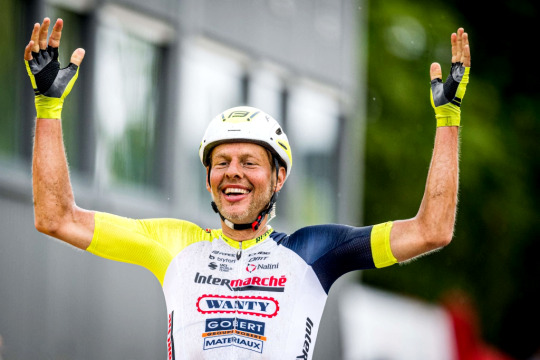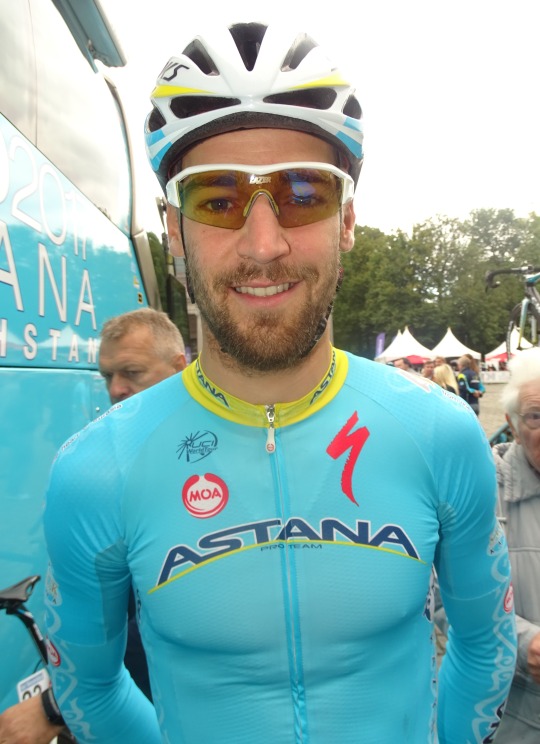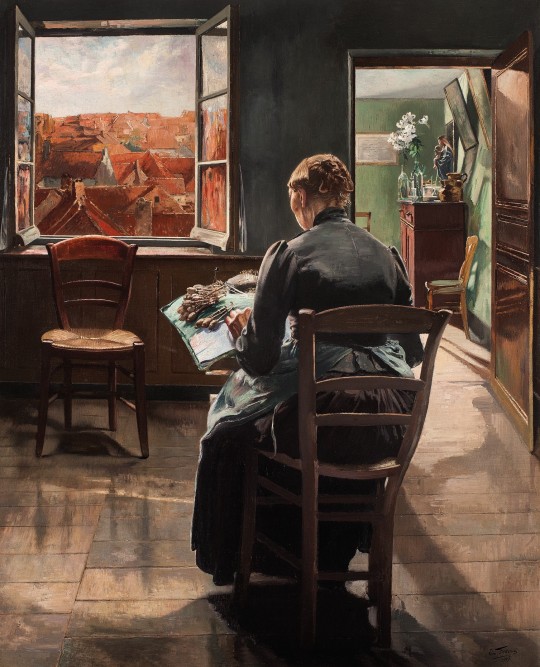#Brussels Cycling Classic
Photo



Taco van der Hoorn of The Netherlands and Intermarché-Wanty-Gobert Matériaux celebrates at finish line as stage winner during the 102nd Brussels Cycling Classic 2022 a 203,9km from Brussels to Brussels on June 05, 2022 in Brussels, Belgium. (Photos by Jasper Jacobs/Getty Images)
#taco van der hoorn#intermarche wanty gobert materiaux#cycling#brussels cycling classic#brussels cycling classic 2022
9 notes
·
View notes
Text

"File:Bruxelles et Etterbeek - Brussels Cycling Classic, 5 septembre 2015, départ (A089).JPG" by Jérémy-Günther-Heinz Jähnick is licensed under CC BY-SA 3.0.
#skinsuit#lycra bulge#lycra#bibshorts#cycling bulge#guys in lycra#skintight#beardsandtattoos#bib shorts#lycra spandex#spandex
9 notes
·
View notes
Text
1. 10 best exhibitions to visit this year in Europe
Europe's cultural calendar has an almost endless offering of works old and new; from classic collections held in some of the continent's most celebrated galleries to fresh exhibitions that show the latest talent breaking in the art world, there's plenty to see. Read more.
2. Good Move: 20% drop in car traffic in Brussels city centre
Since the introduction of the Good Move traffic circulation across the Brussels-Capital Region last summer, figures now show a 19% reduction in car traffic in the city centre; bicycle traffic grew by the same amount. Read more.
3. A toxic trade: Belgium a massive exporter of EU-banned pesticides
Belgium is currently exporting huge quantities of pesticides that banned within the European Union to the rest of the world, RTBF and Le Vif report. Read more.
4. Gas prices to stay 'structurally higher' as Europe is forced to compete with Asia
Gas futures prices, the cost of future contracts for natural gas supply over the next few months, are set to remain high and even increase by the end of the year. Analysts from financial news agency Bloomberg now fear that the European gas crisis is far from over. Read more.
5. 'We live in a more dangerous world,' NATO says ahead of military spending boost
NATO leaders have agreed to significantly ramp up their defence spending in the coming years in the face of the "challenges" posed by Russia and China and the ongoing threat of terrorism. Read more.
6. Fatal cycling accidents and heart failure: Over 400 Belgians died on holiday in 2022
More than 400 Belgians died while on holiday abroad last year, with the number of cycling accidents doubling, the lasting impact of Covid-19 and the high number of cases of heart failure clearly visible in the figures from funeral specialist DELA. Read more.
7. Hidden Belgium: Belgium Wines Bar
No kidding. Modest little Belgium has started producing some very good wines. You can try out a few at the Belgian Wines Bar in Antwerp’s theatre district. Read more.
2 notes
·
View notes
Text
Opening weekend 2024 is here!
So here we are on the eve of the cycling season proper.
Opening weekend starts with Omloop Het Nieuwsblad and finishes with Kuurne Brussels Kuurne on Sunday.
Both of these are traditional long held one day cobbled classics, and for Flemish aficionados like myself, this is the proper start to the season.
And I can say that whilst I’m watching the UAE tour, seeing Tim Merlier winning a sprint.…
View On WordPress
#beer#befendrien#belgium#christophe laporte#cycling#cyclist#fendrien#Flanders#julian alaphillippe#Mathieu van der poel#opening weekend#racing#remco evenepoel#tom pidcock#wout van aert
1 note
·
View note
Text
Brussels Cycling Classic: Arnaud Demare wins sprint with bike throw
Frenchman beats Andresen and Meeus after aggressive Classics racing
from CyclingNews RSS Feed https://ift.tt/Ios5B7l
0 notes
Text
5 Places to Visit Before They Get Crowded
5 Places to Visit Before They Get Crowded
Europe is full of hidden treasures beyond the classic tourist destinations. It's high time to visit them before everyone else does.
As beautiful as they may be, Venice, Nice, and Santorini have in common the fact that they are crowded tourist cities that often offer a reality quite different from the perfect vacation destination portrayed on Instagram. However, there are equally stunning destinations in Europe that are still unknown to many.
Menton, France
The coastal city of Menton capitalizes on its colorful house facades and the typical charm of the French Riviera.
Palm trees, gastronomy, and the French Riviera... We're not talking about the very popular cities of Nice and Cannes, but about a small hidden town on the French Riviera: Menton. Located near the Italian border, it seduces visitors with its typical French charm and microclimate.
Due to its protected location, Menton is the warmest place on the French Riviera in winter and boasts over 300 days of sunshine per year. It's no wonder that Menton is also called the city of Lemon. The mild climate is particularly conducive to citrus cultivation. Whether it's a visit to the baroque old town, a walk along the seafront, or through the blooming gardens, Menton is a real gem.
Antiparos Island, Greece
If you love Greek islands, you've probably heard of Paros. But have you ever heard of its neighboring island, Antiparos? Unlike Paros, it's less crowded and has a much more peaceful pace of life.
With its fine sandy beaches, crystal-clear waters, mystical underwater cave, and the capital and only town on the island, Chora, Antiparos invites discovery and relaxation. The island is accessible after a short boat or ferry crossing from Paros.
Dinant, Belgium
Crossed by the Meuse, the charming little town of Dinant invites visitors to all kinds of water activities in summer.
Planning a city break but not sure where to go? Why not make Dinant your next destination? Located an hour and a half's drive from Brussels, this small Belgian town looks like it's straight out of a picture book. The colorful small houses, cliffs, and the Meuse make Dinant the perfect backdrop for photos.
This refined little town allows visitors to taste local specialties, admire the view from the cable car, and enjoy summer water activities. The region around Dinant also invites hiking, cycling, and castle visits.
Ksamil, Albania
What looks like Saint-Tropez or Capri is actually the Albanian town of Ksamil: crystal-clear turquoise waters, immaculate beaches, and paradisiacal landscapes make Ksamil the ideal place for a summer vacation away from the crowds.
To reach the place, the simplest way is to go through Corfu. After the one-hour ferry crossing to Saranda, it only takes a half-hour bus ride to reach this earthly paradise with typical Albanian hospitality.
Nerja, Spain
Just 45 minutes from Málaga, the most popular tourist destination in southern Spain, is the coastal town of Nerja, on the Costa del Sol in Andalusia. Sun, sea, fresh fish, wine, and flamenco are on the menu in this former fishing village.
Nerja has more than beautiful beaches to offer. Its old town with its Andalusian-style cobbled streets is full of whitewashed houses. Whether as a day trip from Málaga or a vacation destination, Nerja is definitely worth a visit before it gets too crowded.
via Blogger https://ift.tt/3fClsAv
May 08, 2023 at 06:21PM
0 notes
Text
music intro
Hello, I am Mila.
I have always enjoyed music, especially singing and dancing. When I was about 8 or 9, I started music school and played the cello as well as having solfeggio courses. Later I was added into both the choir and the orchestra, often going on trips with a select group of choir members to places like Austria, sometimes in local village music schools to perform and visiting Graz. I had had my musical education for 5 years, going into 6th year before we moved to Belgium. It was hard to continue my musical education in Brussels, but we would sometimes find a private teacher (I took basic piano lessons for 2 or 3 months) and finding a choir, but later the choir advised us to find a private teacher for me as I had a voice that was very different than other voices of children and youth. For my entry into the choir, I sung Faure’s requiem, and as personal selection I chose a piece composed by Nietzsche of a poem. I am happy to see my musical journey resume.
My musical taste has greatly evolved over the years. I liked listening to classical music, a personal favorite used to be Mozart whom I played on the cello (even though he never really composed for that instrument as much as Bach did, he preferred violins and violas), later Richard Wagner, other composers include Bach and Beethoven. I have also enjoyed various genres of the internet, ending with the suffix -core, such as breakcore, webcore, kidcore, cutecore, scene(core), gyaru, or any other I can link examples to illustrate what I mean, and not to mention “loud music for loud people”. I don’t know if there’s a name for this genre, but you could call it hyper. Here is a mix:
https://youtu.be/9XUkweQAn4g
https://youtu.be/aWrXs03k8X4
https://youtu.be/hBdPqaI0NZk
I have also always enjoyed electronic music genres like techno (currently I really like an artist called Micratek and German techno/trance) but later liked it more intense. So, I discovered a genre called gabber originating in the 90s. my favorite mixes can be found on YouTube, sadly most don’t list the individual songs and artists. A specific artist group I enjoy particularly is Gabber Modus Operandi, who use traditional Indonesian instruments and scales in their own music. The music is also called hardcore, or hardcore gabber. The rhythm may go over 200 bmi, and this is my favorite music to dance to, where I have developed a specific leg movement where I can achieve high speed in movement, in accordance with the song. I’ve never learnt dance in a school, I just really, really like dancing.
Another discovery is vocaloid music. I think its very interesting to see how an engineered sound program sampling human voices can be personified and become an electronic music idol. Hatsune Miku is my favorite. Her name translates from Japanese to “first voice of the future”. She is a 16-year-old singer with long blue hair in two ponytails and had live performances by being projected onto special glass for that purpose. She is very popular worldwide and was even featured on the plates of a Japanese space explorer sent to Venus. ( source: Wikipedia https://en.wikipedia.org/wiki/Hatsune_Miku )
I still enjoy coming back to Wagner sometimes, especially the ring cycle. I really like Rheingold as well as Siegfried. I have a fondness for metal clinging sounds.
Other artists I enjoy are Nina Hagen, for her unique and amazingly wide vocal range, her playful, mystic, and lively music that I think is her own genre. She used to be an opera singer. My favorite albums of hers are Nunsexmonkrock and Angstlos. Ayesha Erotica is widely different, but I find her playful and absurdly erotic music both amusing and genuinely enjoyable. It doesn’t take itself too seriously, and that’s what lets these two artists be so unique and free with their creative minds.
0 notes
Photo

Roger de Vlaeminck.
#cycling#road cycling#road racing#bicycles#bicycle#bike#bikes#cycle racing#bicycle racing#uci world tour#kuurne brussels kuurne#omloop het nieuwsblad#belgium#belgian classics#flanders classics#cobbled classics#spring classics#retro cycling#vintage cycling
22 notes
·
View notes
Photo




Remco Evenepoel of Belgium and Team Deceuninck - Quick-Step celebrates winning during the 101st Brussels Cycling Classic 2021 a 205,3km race from Brussels to Brussels on August 28, 2021 in Brussels, Belgium. (Photos by Mark Van Hecke/Getty Images)
25 notes
·
View notes
Text

"2016 Brussels Cycling Classic 017" by Zajano is licensed under CC BY-SA 4.0.
#skinsuit#lycra bulge#lycra#bibshorts#cycling bulge#guys in lycra#skintight#beardsandtattoos#bib shorts#lycra spandex#spandex
4 notes
·
View notes
Photo

The spring classics are fast approaching...
#Kuurne-Brussel-Kuurne#poster#Illustration#Peter Sagan#Belgium#spring classics#2018#cycling#cycle sport#road racing
17 notes
·
View notes
Link
World Sports Highlights: Cycling Brussels Classic 2020 ¦ Highlightsᴴᴰ – Watch all Live Sports Streaming and Highlights on World Sports Highlight ©. Online sports channel.

0 notes
Link
World Sports Highlights: Cycling Brussels Classic 2020 ¦ Highlightsᴴᴰ – Watch all Live Sports Streaming and Highlights on World Sports Highlight ©. Online sports channel.

0 notes
Link
#pro cycling#kuurne brussels kuurne#biking#cycling#kasper asgreen#deceuninck quickstep#spring classics
0 notes
Photo

Finish of Brussels Cycling Classic 2019 was... close.
(c) Bruno Bade
#cycling#caleb ewan#pascal ackernmann#jasper philipsen#davide ballerini#jasper stuyven#arnaud demare#brussels cycling classic 2019
1 note
·
View note
Photo

The Flemish Lace Maker, La dentellière flamande by Léon Frédéric, 1907
"I have always been moved by silence represented in paintings throughout history, from Vermeer’s interiors depicting a lone woman bathed in light and Jacobus Vrel’s empty street scenes, to the quiet beauty of Hammershoi’s silent rooms, and this painting by Leon Frederic is such a work. It depicts a Flemish woman quietly working in an interior with a townscape beyond, and the light that illuminates the flowers and the wall on the right side is particularly striking."
George Wachter
Léon Frédéric drew on contemporary and earlier influences as well as on his own personal spiritual views of life and nature to evolve a unique artistic style. Working during a period when Impressionism and its offspring Divisionism and Post-Impressionism were the main currents of avant-garde art, Frédéric’s idiosyncratic realism comes as a considerable surprise. Frédéric studied briefly under Charle-Albert before attending the Académie Royal des Beaux-Arts in Brussels, where he became a pupil of Jules Vankeirsblick (1833-96) and Ernest Slingeneyer (1820-94). He also worked in the studio of Jean-François Portaels (1818-1895).
The tenor of Frédéric’s work was formed largely by the Italian and Flemish art of the fifteenth and sixteenth centuries, and the poetic paintings of the English Pre-Raphaelites. A two-year sojourn in Italy (1876-78) which included visits to Venice, Florence, Naples and Rome, exposed Frédéric to the works of the Italian Renaissance. This experience conveyed to the painter the profound beauty of nature with its artistic disposition toward harmony, and the inherent nobility of mankind. This sense of harmony was balanced by a personal artistic vision which conveyed a truthfulness to nature which was reinforced by Flemish, Dutch and German Old Master painters who had directly studied their natural surroundings. Both Italian and Northern Renaissance schools depicted the natural world through clear, detailed compositions, and their influence infuses Frédéric’s work with a lucid and unaffected honesty. In his symbolist designs, including his various large multi-paneled Cycles of Life, Frédéric attempts to unify Christian mysticism with the current social conditions of the working class. The landscapes included in many of these compositions take delight in a pantheistic communion with nature.
Following his stay in Rome, Frédéric made his debut at the Brussels Salon in 1878. He then became a member of the Brussels-based association L’Essor, a group of young artists who wanted to paint contemporary social reality instead of using imaginary or literary themes as their artistic starting point. Subsequently, his work was exhibited in Ghent, Liège, Munich, Nice and Paris. He was awarded gold medals for painting at the Exposition Universelle of 1889 and 1900, and in 1929, together with James Ensor, Frédéric was created a baron.
Many of Frédéric’s early works show poor people and peasants, especially after 1883, when the artist moved from Brussels to Nafraiture, a small village in the Ardennes region of Belgium where he lived for several years.
At first glance, the present realistic composition seems quite straightforward. The painting’s quiet intimacy draws the viewer in to a spare interior, where an elderly lace maker bends over her work, bobbins and pins before her. However, the subject matter and informal composition are rendered equivocal by this monumental woman, mysteriously turned away from us. The mood and manner is quiet, and time seems to hang suspended. The lace maker, dressed in black, but wearing a blue work apron, seems to live alone, but an empty chair faces her, set beneath the open window. This chair exactly mirrors her own, and is a portrait of absence. The simple room displays an exquisite symphony of light. The watery reflection on the polished floor, the dappled light and shadows in the distant bedroom, the bright stalk of Madonna Lilies set in a simple glass bottle before a life-like statue of the Virgin and Child, all help suggest a strong sense of three-dimensional space. Perhaps the most striking passage of this contemplative work is the jumble of red-tiled roofs viewed from the open window. Their bright color and chaotic arrangement are in striking juxtaposition to the neat, quiet interior dominated by the silent concentration and downward gaze of the lace maker, her expression inscrutable to the viewer.
Spinning, weaving, and needlework of all kinds have, since biblical days, been seen as activities associated with feminine virtue. The book of Proverbs (31: 10-13), for instance, in a section which contains the lines “Who can find a virtuous woman? For her price is far above rubies,” goes on to say: “She seeketh wool, and flax, and worketh willingly with her hands.” In the Odyssey, to cite a classical, example, Penelope puts off her anxious suitors, while awaiting Ulysses’ return, by weaving by day and unraveling her work by night. Perhaps Frederic here portrays industriousness as a symbol of domestic virtue, a theme bolstered by the inclusion of the lilies and the statue of the Virgin Mary, all bathed in radiant light on this warm spring or summer day.
Léon Frédéric certainly would have been familiar with the long artistic tradition of depicting the subject of lacemaking. The theme was particularly popular in the Seventeen century and was frequently portrayed by Dutch artists such as Johannes Vermeer, Pieter de Hooch, and Nicolas Maes.
24 notes
·
View notes